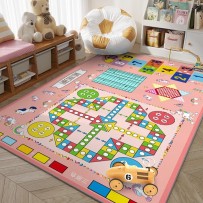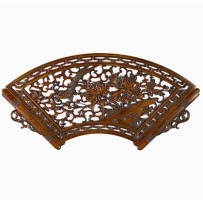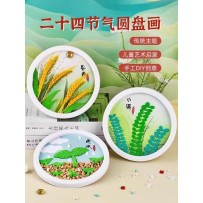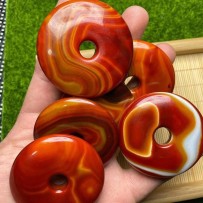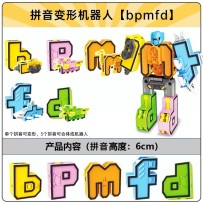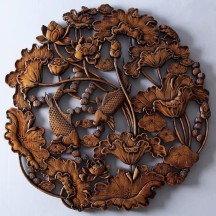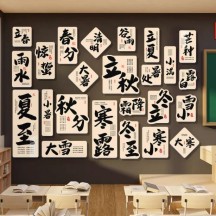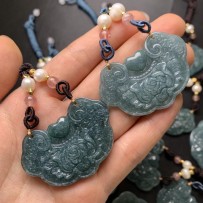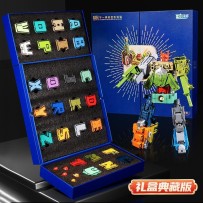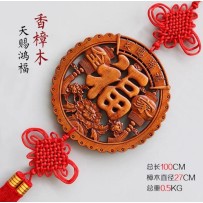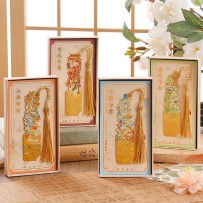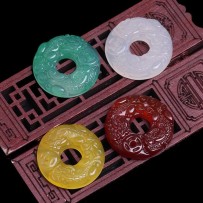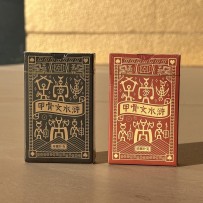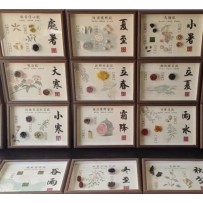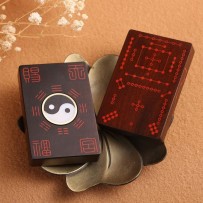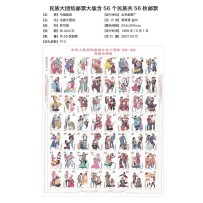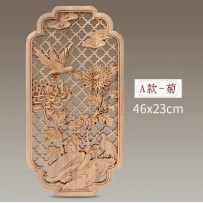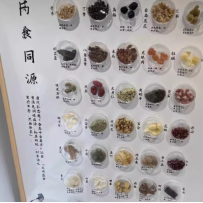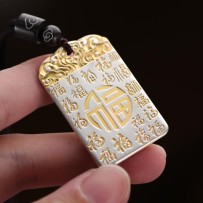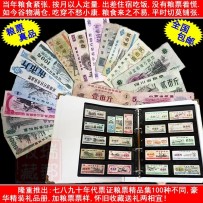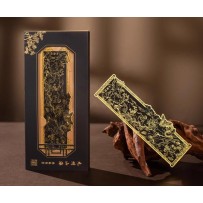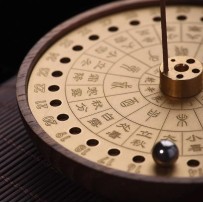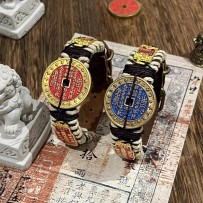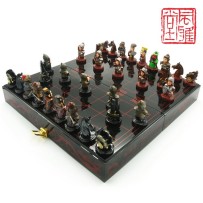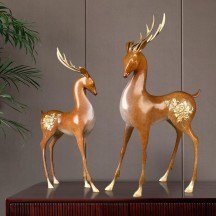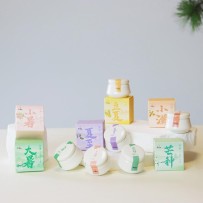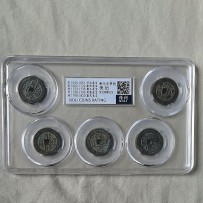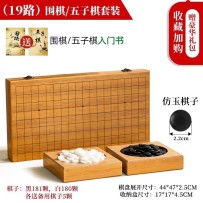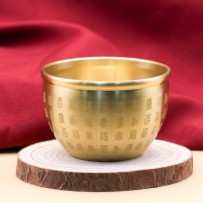Subcategories
Active filters
Dongyang woodcarving mainly features flat relief, and is characterized by multi-layered relief and scattered perspective composition. Carvers employ techniques such as thin relief, low relief, deep relief, high relief, and multi-layer layering to create works that are rich in layers yet dynamic, with smooth and natural lines, enabling them to vividly present various patterns on camphor wood.
Ping An Kou is a traditional Chinese jade ornament. It is round and flexible in appearance, which conforms to the "doctrine of the mean" in traditional Chinese culture. In ancient times, it was called "Bi" and has the effect of nourishing the body. In modern times, it is often given to lovers, relatives, and friends as a gift to wish for peace.
Dongyang woodcarving mainly features flat relief, and is characterized by multi-layered relief and scattered perspective composition. Carvers employ techniques such as thin relief, low relief, deep relief, high relief, and multi-layer layering to create works that are rich in layers yet dynamic, with smooth and natural lines, enabling them to vividly present various patterns on camphor wood.
The patterns on jade pendants are extremely delicate and varied, and through the patterns, we can understand the rich cultural connotations, production techniques, and social and economic environment of the time.
Dongyang woodcarving mainly features flat relief, and is characterized by multi-layered relief and scattered perspective composition. Carvers employ techniques such as thin relief, low relief, deep relief, high relief, and multi-layer layering to create works that are rich in layers yet dynamic, with smooth and natural lines, enabling them to vividly present various patterns on camphor wood.
Ping An Kou is a traditional Chinese jade ornament. It is round and flexible in appearance, which conforms to the "doctrine of the mean" in traditional Chinese culture. In ancient times, it was called "Bi" and has the effect of nourishing the body. In modern times, it is often given to lovers, relatives, and friends as a gift to wish for peace.
These creatively designed playing cards make oracle bone script appear adorably charming. Each card is like a window into ancient civilization, allowing everyone to learn more about oracle bone script through interactive gameplay. This fresh and engaging approach deepens the understanding and memory of characters from Water Margin, encouraging more people to appreciate and take interest in oracle bone script, and to experience the beauty of Chinese charac
Dongyang woodcarving mainly features flat relief, and is characterized by multi-layered relief and scattered perspective composition. Carvers employ techniques such as thin relief, low relief, deep relief, high relief, and multi-layer layering to create works that are rich in layers yet dynamic, with smooth and natural lines, enabling them to vividly present various patterns on camphor wood.
The Hetu and Luoshu are two mysterious patterns handed down from ancient China. They contain profound principles of the universe and astrology and are known as the "Magic Cube of the Universe". They are the source of Chinese culture, Yin-Yang and the Five Elements. The phrase comes from the Book of Changes, "The Hetu and the Luoshu". He refers to the Yellow River. Luo refers to the Luo River.
This set of National Unity stamps, themed around joy, harmony, and celebrating the birthday of the motherland, includes a total of 56 stamps. For the first time, the unique charm of China’s 56 ethnic groups is vividly captured within these miniature artworks. Each stamp represents one ethnic group, featuring a young man and woman in traditional attire—singing, dancing, or engaging in everyday life. The illustrations are rich in character, with bright, pure colors, elegant and flowing lines, and expressive faces.
Dongyang woodcarving mainly features flat relief, and is characterized by multi-layered relief and scattered perspective composition. Carvers employ techniques such as thin relief, low relief, deep relief, high relief, and multi-layer layering to create works that are rich in layers yet dynamic, with smooth and natural lines, enabling them to vividly present various patterns on camphor wood.
The Peaceful and Trouble-free plaque is a type of jade pendant. Because the entire jade plaque is not carved, there is a saying in the jade industry that things without any carvings are called "nothing", so the jade plaque borrows the meaning of "peaceful and trouble-free". "Peaceful and Trouble-free" means peace and everything goes well.
Ration coupons are products of a specific historical period, symbolizing the planned economy, material shortages, and the state's efforts to ensure people's livelihood. They were not merely vouchers for purchasing grain, but also a reflection of the economic system and social life of that era, carrying the memories and cultural significance of a particular time in history.
The talisman money is a Taoist prayer object. These coins are cast with patterns of the Eight Diagrams, immortals, Taishang Laojun, and the God of Thunder. The mountain ghost flower money is a carrier used by Taoist priests in the Qing Dynasty to cast spells to subdue demons and exorcise ghosts. It can also be called a magic tool. After being consecrated by Taoist priests, people are requested to hang it in their homes or carry it with them to ensure safety.
The term "Xiangqi" (Chinese chess) originated during the Warring States period and has its roots in China. Its strategies are inspired by the ancient military principles found in Sun Tzu's The Art of War, particularly the idea that "the supreme art of war is to subdue the enemy without fighting.
Deer are noble, elegant, gentle and mysterious animals with upright postures.They are a good choice for displaying at home or giving as gifts.
The Five Emperors' Coins refer to five round copper coins with square holes, which symbolize the power of the five elements and the five directions, and have the function of warding off evil spirits and bringing good fortune. The saying that the five emperors minted coins is mostly fabricated by later generations. People call the coins issued by several dynasties the Great Five Emperors' Coins. The Great Five Emperors' Coins are made of bronze, including the Qin Banliang, the Han Wuzhu, the Tang Kaiyuan Tongbao, the Song Yuan Tongbao, and the Ming Yongle Tongbao.
Because of its legendary meaning of attracting wealth and its function of receiving money, the cornucopia is listed as an important Feng Shui ornament for attracting wealth, along with the "golden toad" and "lucky cat". In China, especially among the Han people in the south of the Yangtze River, the cornucopia is a treasure for guarding the house.










